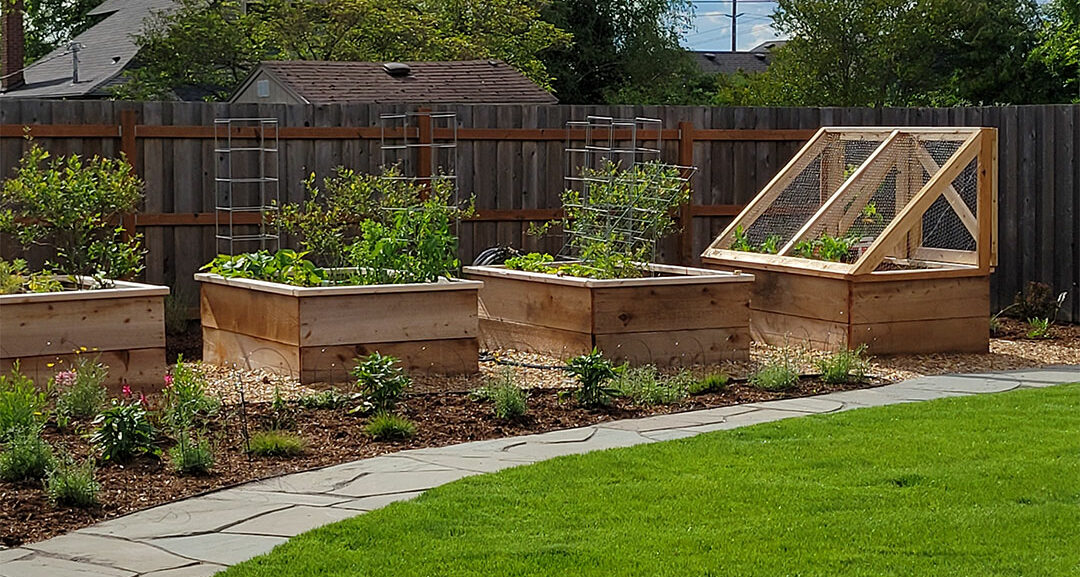The Art of Edible Landscaping: Tips for a Flavorful Garden
As the world becomes increasingly environmentally conscious, more and more people are taking to their gardens to create beautiful and functional landscapes that look good AND serve a practical purpose. For many of us, this means creating an “edible landscape” – a garden that looks stunning and provides fresh, healthy produce.
If you’re looking to create your edible landscape, it can be overwhelming to know where to start. In this Harmony Design Northwest blog post, we’ll provide tips and tricks for creating an edible landscape.
Benefits of an Edible Landscape
An edible landscape offers numerous benefits, seamlessly blending aesthetics with functionality. By incorporating fruits, vegetables, herbs, and edible flowers into your landscape design, you create a space that is visually appealing and provides fresh, organic produce right at your doorstep. This approach to landscaping encourages a sustainable lifestyle and fosters a deeper connection with nature.
Additionally, an edible landscape can add to your home’s value. Prospective homebuyers are often attracted to the practicality of edible gardens that are integrated into the landscape, making your home stand out in the crowded real estate market.
Use Edible Flowers for Added Beauty and Flavor
Forks Over Knives, the leader in plant-based living, notes that one of the easiest ways to add pops of color and flavor to your edible landscape is by incorporating edible flowers. Flowers like nasturtiums, violets, and pansies not only look beautiful, but also add a lovely peppery flavor when added to salads and other dishes. Other edible flowers like bergamot and lavender can be used to make teas and infuse oils.
Companion Planting Techniques
The Farmer’s Almanac explains that companion planting involves strategically planting different crops together to create a natural pest control system. Certain plants repel pests, while others attract beneficial insects like ladybugs and bees that can help pollinate your fruits and vegetables. For example, planting marigolds alongside your tomatoes can help repel pests like aphids and whiteflies, while planting basil near your peppers can improve their flavor and health.
Moisture Retention and Weed Control
Mulch is a great way to improve the health of your garden’s soil and plants. By adding a layer of organic material like shredded bark, compost, or leaves to the soil, you can help retain moisture, regulate temperature, and prevent weed growth. Plus, as the mulch decomposes, it will add nutrients back into the soil, making your plants healthier and more productive.
Incorporate Edible Vines
Edible vines like grapes and kiwis are a great way to add a natural canopy to your garden, creating shade and a cool retreat from the heat. Not only do these plants look beautiful, but they also provide a delicious source of fresh fruit. Plus, their sprawling growth habit can help fill in any empty spaces in your garden, creating a more lush and full landscape.
Prevent Common Pests
Preventing common pests in your garden, such as Japanese beetles, requires a proactive and integrated approach. First, maintaining garden hygiene by regularly removing debris and weakened plants can reduce pest habitats. Introducing beneficial insects, like ladybugs and lacewings, helps naturally control beetle populations.
For Japanese beetles specifically, the best strategy is to handpick them early in the morning when they are less active. Alternatively, using pheromone traps placed at the perimeter of your property, not near the affected plants, can lure them away. Learn more about Oregon’s Japanese beetle eradication program here.
Creating an edible landscape is not only a fulfilling endeavor, but it also allows for a sustainable way of living. By integrating various edible plants into your landscape or garden, you can provide fresh, nutrient-rich produce for your family while also reducing your carbon footprint. Additionally, an edible landscapes promote biodiversity and support the local ecosystem. So, start planning your edible oasis with the tips above, and let nature work her magic.
We hope you’ll give us the chance to show you the best customer service in Portland landscape design! Don’t forget to view our Portfolio page and see more of our work on Houzz here.
Fill out a Contact Form today to schedule your Discovery Call!

